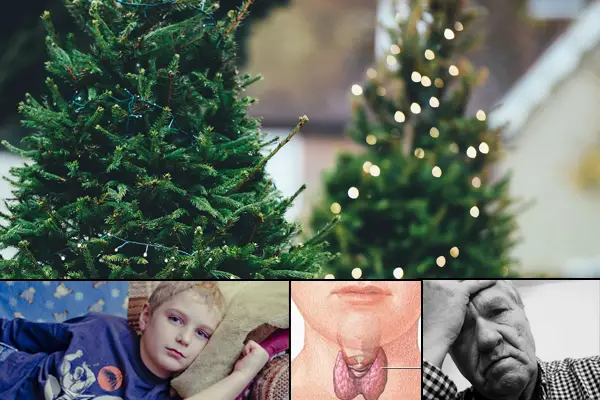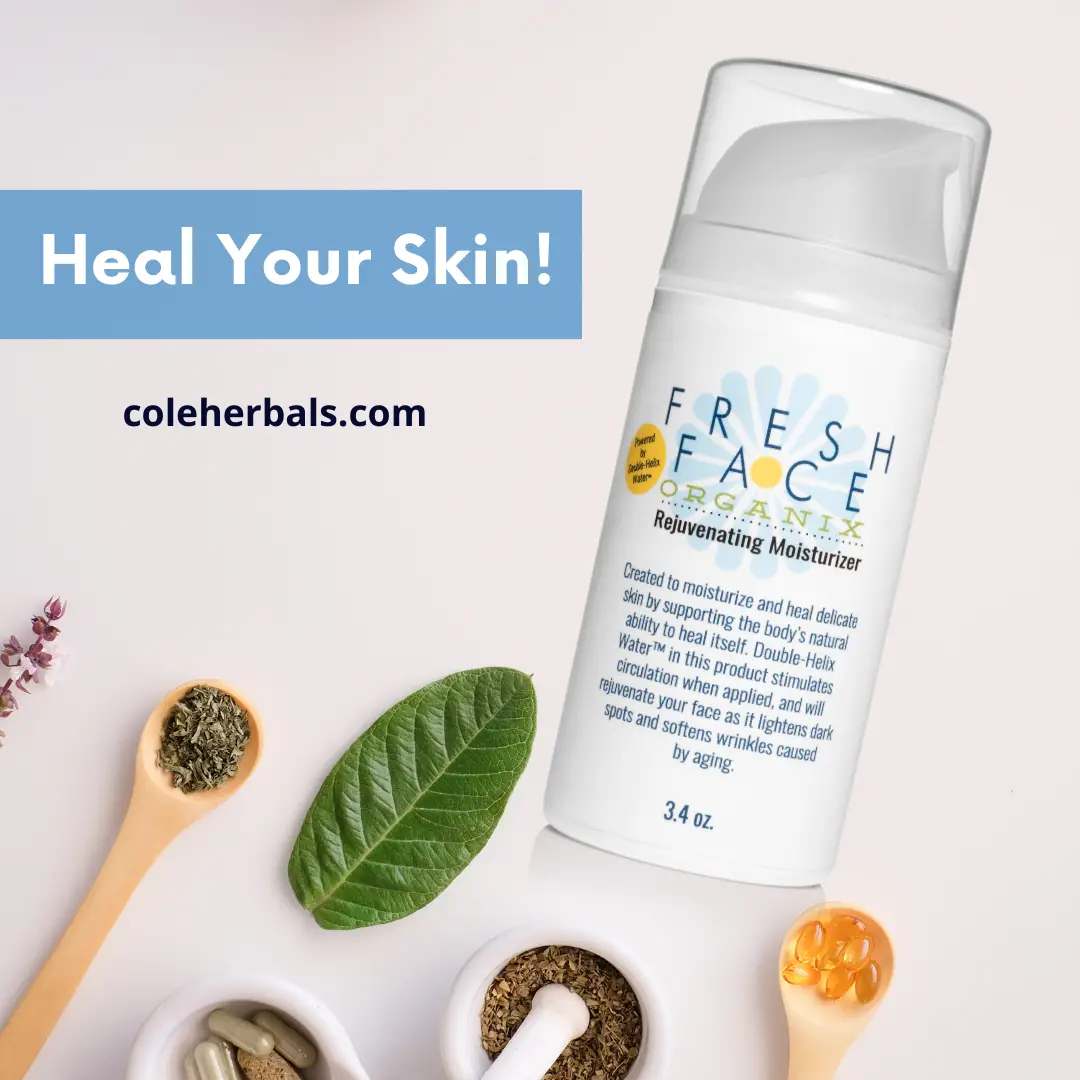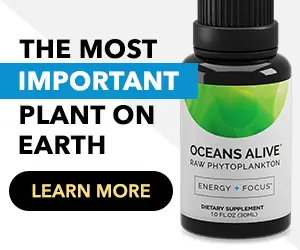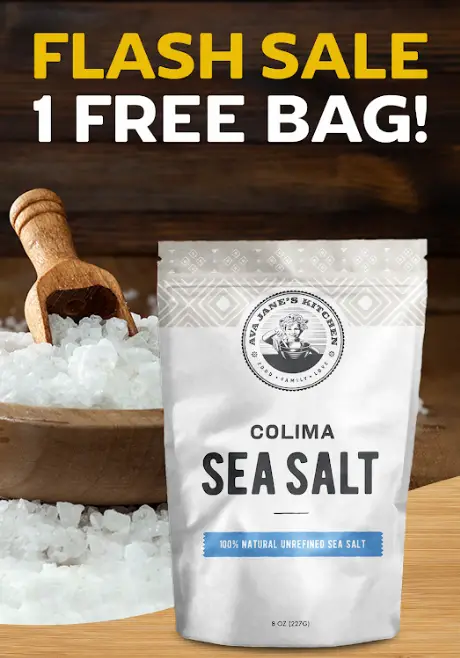During the festive spirit of the Christmas and holiday season, the last thing most of us want to do is think about negative things and worry about toxins.
That being said, it’s important to be aware of the risks that come with cheap Christmas and other holiday products, especially considering how often young children come into contact with them. Artificial Christmas trees, while not an obvious health concern to most people, contain hazardous plastics that may compromise human health with prolonged exposure. As many as 85% of them may come from China according to the National Christmas Tree Association’s website citing the U.S. Commerce Department, and these trees are often much more likely to contain harmful chemicals and materials.
Fortunately, there are a few simple things you can do to minimize the risk, and still enjoy the holidays to their fullest.
Artificial Trees From China: May Be Made From Carcinogen, Toxins, and Lead
The needles on artificial trees are made from PVC. PVC is made from vinyl chloride, a known human carcinogen, which can also cause asthma and issues with the lungs because it releases dioxins into the air, according to a study from the National Health Institute that has been removed from its website in recent years. Dioxins exposure can lead to reproductive, and developmental issues.
Because PVC is a hard plastic, to make it soft like the Christmas tree needles, it is softened with phthalates.
Dozens of studies have come out recently linking phthalates to asthma, breast cancer, obesity, type II diabetes, attention-deficit hyperactivity disorder, autism, reproductive issues, behavioral problems, neurodevelopmental issues and fertility problems, reported The Guardian.
When exposed to PVC by using products that are made from it (not only Christmas tress but also flooring, containers, toys, shoe soles, plastic bags, and many others) you exposed to dioxins, and phthalates, two groups of chemicals that have severe side health concerns, including increased autism and cancer risks.
To make matters worse, PVC is sometimes stabilized with lead, which can be inhaled, especially as the artificial Christmas tree gets older.
Artificial trees may also be made with fire retardants, which have many harmful health effects, especially to the reproductive system, hormones, thyroid function, and neurological development of children.
Because of these and other chemicals, it is highly recommended to purchase a fresh tree each year instead, for the health of everyone, especially children, if you are sensitive to these chemicals or are an idealist when it comes to health and avoiding potential toxins, especially if there are young children or pets present in your household. And when possible, buy American or from a trusted company that uses high quality materials.
Most of Your Christmas Decorations Could Come From China
The Environmental Working Group once published a children’s safety guide for the holidays, in which they urged the parents to get rid of old plastic trees. With age, fake trees release lead dust.
And because many trees are made in China, trees could potentially contain lead levels that exceed U.S. safety standards.
A 2003 report in The Washington Post detailed the situation facing Chinese workers who crank out Christmas trees for big box stores in the United States :
“On the concrete floors of Zhang’s Shuitou Co. factory, migrant workers, most earning about $100 a month, squat in front of hissing machinery as they melt chips into moldable plastic, pulling levers by hand to squeeze out Christmas tree ornaments,” the article details. “A woman sits barefoot on an empty packing tube, knife in hand, shaving extra bits of plastic from the finished products before depositing them in an oil drum.”
Two dozen men feed spools of green plastic into a machine that stretches it along a conveyor, creases it onto a wire, then slices both sides into fringes, yielding branches for artificial Christmas trees. Other men fuse the branches together, jamming them with their bare hands into the center of a spinning rotor.
The article continues:
“Few of these goods will land in homes within predominantly Buddhist China, a fact underscored by the shrine to local spirits tucked into the corner of the factory, sticks of incense standing upright in a ceramic bowl beneath red neon lights…The products will be boxed and trucked to a nearby port, then shipped to points around the globe — the United States, Europe, Japan, Latin America and Africa.”
According to the article, a nearly equal percentage of Christmas lights, ornaments and wreaths also come from China.
If you want to still use an artificial tree, there are a few things to do to minimize the risks:
- Keep children away from touching the tree too much
- Wear gloves when assembling the tree
- Wash your hands thoroughly after touching the tree
- Keep the gifts away from the tree if possible
- Get a tree made from a safer type of plastic
- Damp mop or clean under the tree regularly
- Do not keep an artificial tree for more than nine years
Are PE Plastic Christmas Tree Better?
In the last decade a new type of artificial tree became popular, with many wondering if it is safer. The tree is said to be made from PE plastic or polyethylene, but in reality most manufacturers still use PVC mixed with PE. But if you come across pure PE tree, it is slightly better, because it does not need lead to be stabilized. However, it is still a plastic with similar health hazards.
And while some companies claim it is recyclable, most trees are made from different materials, including wooden and metal parts, making it nearly impossible to recycle.
If you do choose to get a PE tree, there are Charlotte Fir and Williamsburg Pine varieties.
Pros and Cons of a Real Christmas Tree
There are arguments that a real Christmas tree is safer for health, however, real trees also come with possible health effects to consider.
Pine trees contain aromatic chemicals that can cause respiratory problems to some (although others say they help clear sinuses; this is a matter of personal preference as to how you may react). Fir and spruce trees, however, are said to be less irritating.
Besides choosing the type of the tree, it is important to ask what chemicals have been used on it. Many real Christmas trees are full of pesticides linked to cancer, neurotoxicity, asthma, and other serious conditions. Instead, choose an organic, pesticide-free tree when shopping this season if possible.
If you do get a real tree this year, learn more on how to remove it by using this resource.
Find an Organic Christmas Tree
Websites such as Green Promise list organic Christmas tree sources. You can also look up Local Harvest for local farmers you can yourself and find out what they use or don’t use on their trees.
Some people also choose to buy a living tree with the roots attached, and planting it after the holidays in the backyard. A living tree can also be rented.
What’s Better for The Environment?
Real trees are also considered to be the most environmentally friendly, according to recent research, but are they best for the environment?
Real trees usually require a lot of pesticides and fertilizers to grow, and are often sprayed with chemicals to keep fresh.
Fake trees are made from plastics that are toxic to produce, not to mention the coal emissions from the factories producing them.
Both real trees and artificial trees require energy to be transported; however, the majority of fake trees require more energy to ship all the way from China.
The study concluded that you would need to use an artificial tree for 20 years, before its environmental footprint becomes equal to one real tree (an artificial tree is not recommended for use after 9 years, as it created dangerous lead exposures).
Lastly, fake trees cannot be recycled, but a real Christmas tree can be recycled at curbside at regular pickup times.
Whether it is for your health or the environment, a real Christmas tree wins in both cases, and many appreciate it more for its scent. Just be careful not to step on those pine needles.
This article was first written in December 2016 and updated in November 2021.
Thanks for installing the Bottom of every post plugin by Corey Salzano. Contact me if you need custom WordPress plugins or website design.













